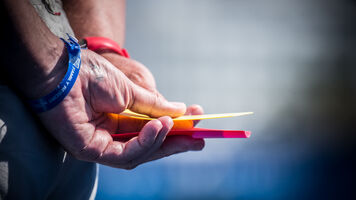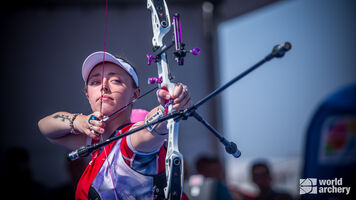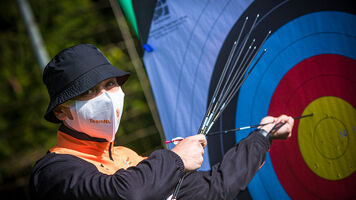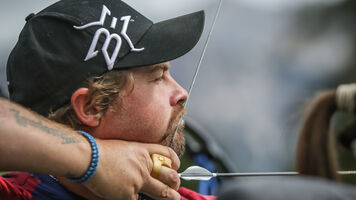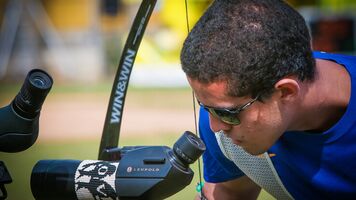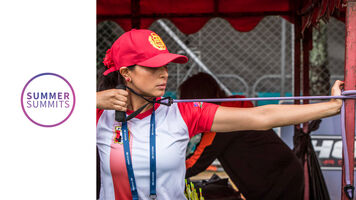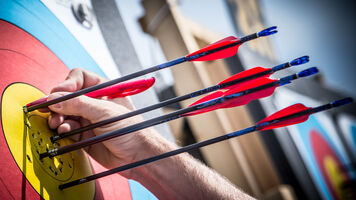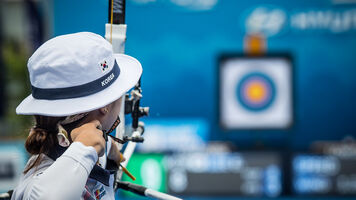How to shoot like Aida Roman in 7 seconds
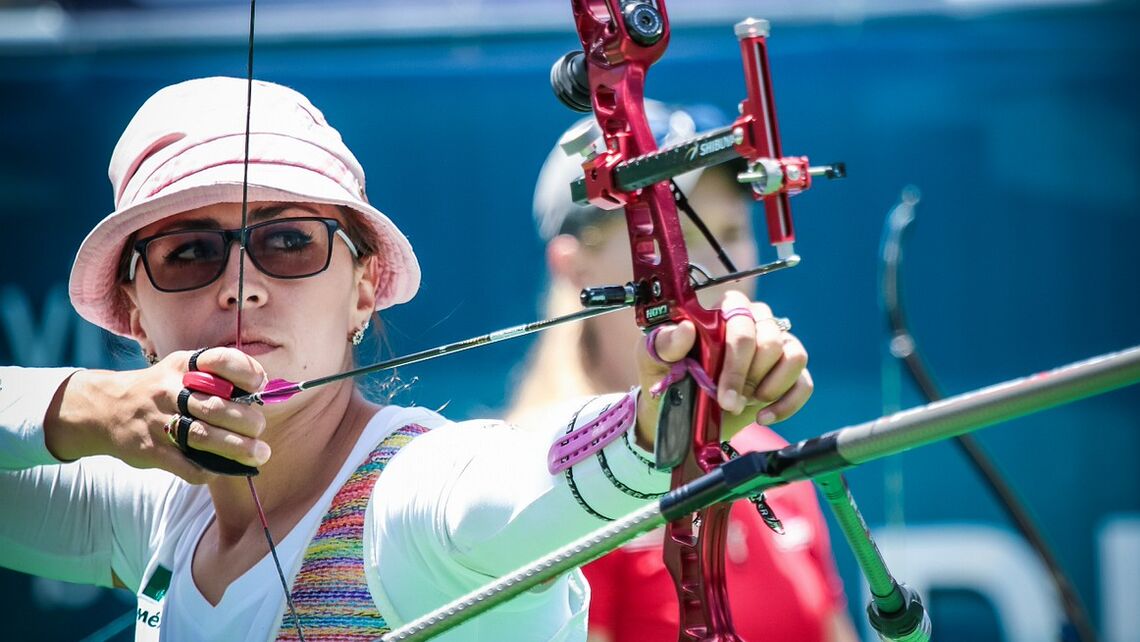
With more than 10 years of international experience in archery, Aida Roman has won a bounty of medals and titles, the most famous: An individual second-place finish at the London 2012 Olympic Games.
Known for a strong and deliberate technique that’s performed under the highest of pressures, Aida calls her shot routine her archery dancing steps.
In seven seconds, she goes from fingers on the string, to watching the arrow hit the target – if all goes to plan, in the 10.
“When you are nervous, your head thinks many things. With a routine, if you practise it, your body will start to remember it until it becomes a part of you. It’s automatic,” she explains.
Aida found her routine by analysing videos of her technique, finding that her shooting naturally happened in seven seconds – when it was a good shot.
“I started to count everything step by step to help my brain and mind to stay calm,” she says.
Before the shot
Dancers, Aida says, have steps and perform based on the music. To keep a rhythm while she shoots, Aida counts during each and every shot. In her own words, it’s her “inner music”.
The shot doesn’t start until she’s put her fingers on the string, so loading the arrow and setting the clicker all happen outside of the rhythm.
“Some archers might start counting when they take the arrow and put it in the bow, but I don’t,” she says.
1 second: pre-draw
Aida puts her three fingers around the string, taking a deep hook, raises her hands high – keeping the arrow pointing towards the target – and then settles down, while pre-drawing the bow to an almost imperceptible stop (she barely halts and says the whole shot should be one movement).
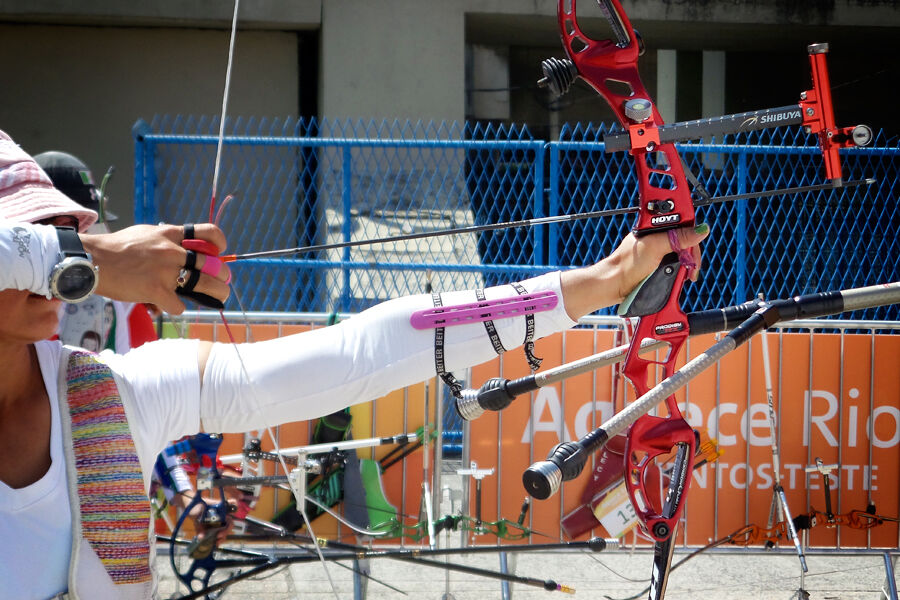
“I start to count while doing the pre-draw.” At that hint of a pause, with the string drawn back about a quarter of the way, she says: “That’s one.”
2-4 seconds: Draw
She soon resumes: “The two is when I draw and start to focus on my sight.”
Aida looks through her aperture from the start of the draw phase. She pulls the string almost directly back, angled slightly down, straight towards her chin.

Her back shoulder blade moves round to meet the one supporting her bow arm.
“Three, four… so three seconds to complete it. I like to count to keep an order in my head, to have an equilibrium while competing,” the Mexican athlete explains.
5 seconds: Anchor
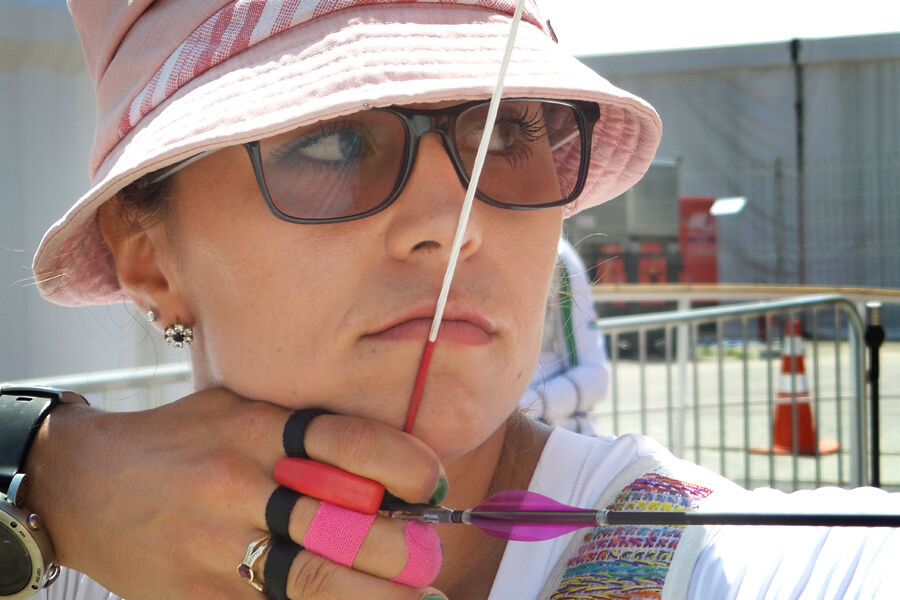
At five seconds into the routine, Aida anchors her hand underneath her chin and against her jaw. The bow’s string cuts down the middle of her mouth and just touches the end of her nose.
“I need to be ready to shoot at this point, with both my equipment and my mind,” she says.
6 seconds: Release
“At six, I shoot!” Aida says that if she takes too long, then she starts to have dips in her aiming: “I don’t like it.”
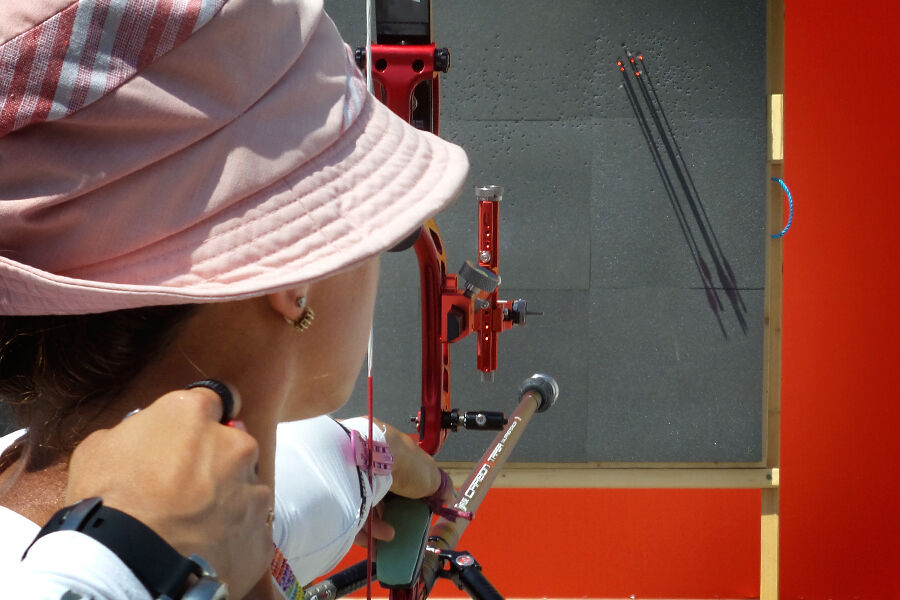
“The shots that you do without many thoughts in your mind are more natural and clean. They are usually good shots that end up in either the nine- or 10-ring.”
7 seconds: Follow through
A last second, added to the end of the routine, allows time for Aida to pose with her drawing hand behind her head and arm still outstretched towards the target.
Don’t worry about the movement of the bow, she says: “It varies from archer to archer.”
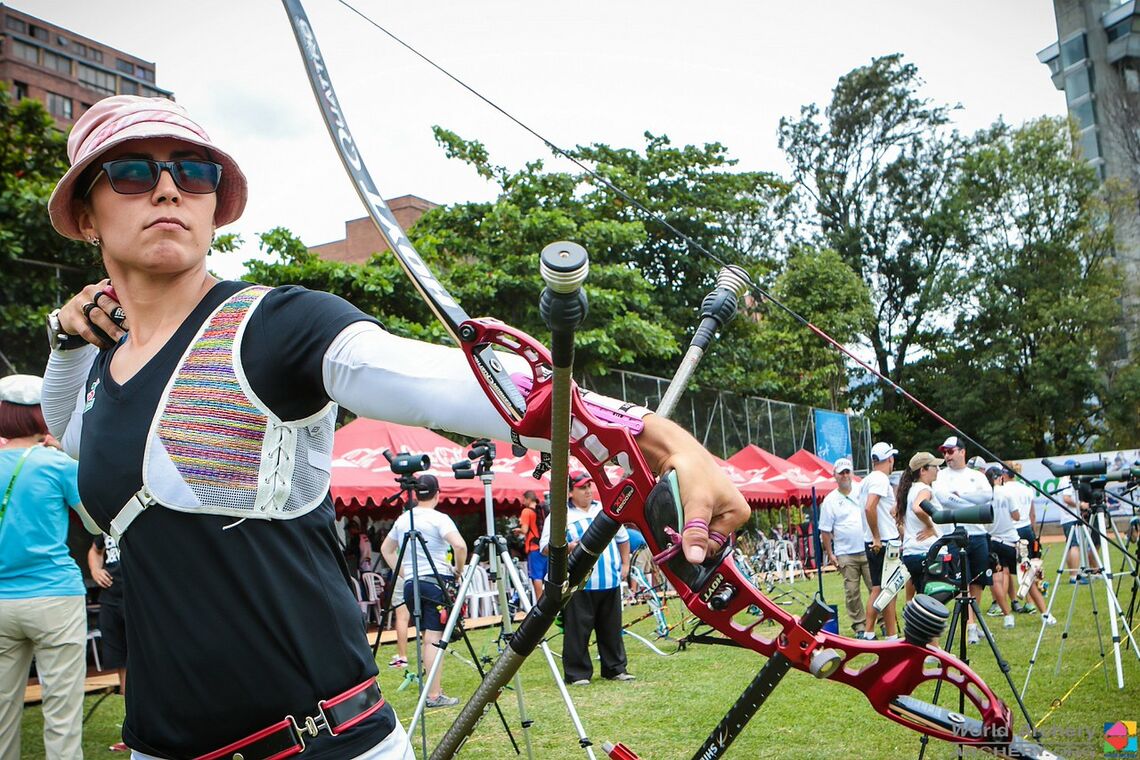
Despite the clear-cut steps Aida has to make her shot a good one, following the routine is still something she aims for, rather than sees as restrictive. Aida says it doesn’t matter if she forgets a phase, or something feels different, she just focuses on the next parts, adjusting to compensate.
“I can change things without any problem,” she says. “I usually try to keep the seven steps because that’s what works best for me. But, if I change one, I just try to keep the shot as clean as possible.”
“It’s a process and it helps me to stay calm and relaxed before shooting.”



